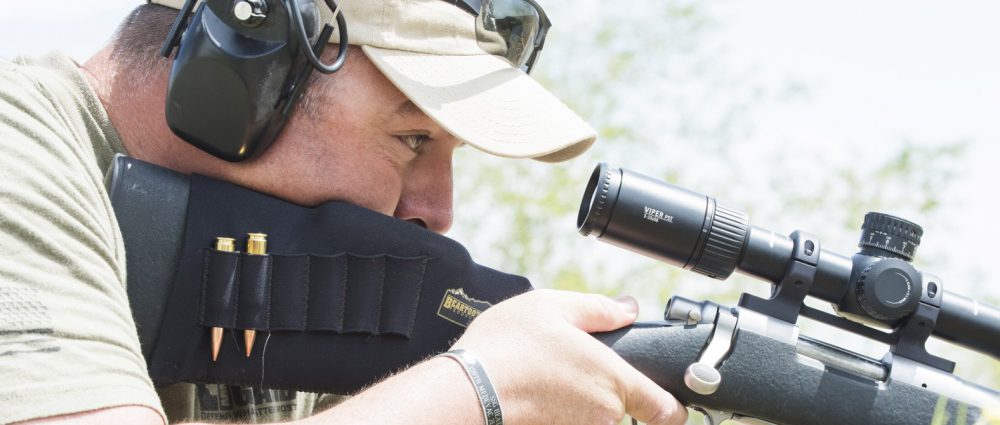Idaho National Guard marksmanship team trains with local Treasure Valley sniper police

MELBA, ID, UNITED STATES
06.09.2019
Story by Master Sgt. Becky Vanshur
MELBA, Idaho – “Everybody wants to be a sniper, until it’s time to do the sniper stuff,” said Cpl. Brian Lueddeke, a sniper instructor from the Meridian Police Department. “It’s just what it is, right, the hard truth. We are called lizards because we are out there lying on the hot rocks baking ourselves, or we are up on a rooftop blanketed by snow in a blizzard.”
The Idaho National Guard marksmanship team participated for the first time in the urban and rural sniper training held in Melba by the Treasure Valley’s SWAT sniper element. The Meridian Police Department sponsored the course and the SWAT team instructors volunteered their time to produce the intense 50-hour, five-day course, held from June 3 through June 7.
Police officers from the Ada County sheriff’s office, Gem County sheriff’s office and Soldiers from Idaho National Guard completed their week of training with a certified qualification exam. These are essential skills necessary to operate effectively as a designated precision marksman, commonly referred to as DPM, or sniper.
The two most essential skills learned were marksmanship and field craft. Marksmanship is engaging select targets with consistent precision fire and the use of a bolt-action scope riffle. Field craft is the ability to effectively detect, observe and report critical information to their operational command while remaining in a concealed position.
“What are some things in the urban environment that can cause us problems when we are out on a mission? Sound. Yes, but that can also be a cover,” said Lueddeke. “People. Yes, the lookie-loos. Everybody flocks to where the police are and now you have all sorts of issues in the event that you run into an immediate threat situation and need to take a shot. Vision obstruction from buildings and wind compression problems can occur more frequently in the urban environment than in a rural environment.”
As the course concluded, a sniper now has the training and discipline to research an objective and pre-select locations where they can move into undetected to observe their objective.
“Everyone sees us as just shooters but that’s not really what it is,” said Patrol Officer Travis Woodbury, from the Nampa Police Department and a volunteer sniper instructor for the course. “It is a constant surveillance roll. We are information gathers before we are anything else. For example, if we gather enough information from a reconnaissance surveillance, and report it back, it might just be enough information to issue a search warrant from command.”
The city of Melba and Melba High School graciously volunteered classroom space, building rooftops and shooting ranges in support of the joint training.
The military and the police departments across the Treasure Valley have continued to work together throughout the years in real-world missions as well as in a training scenario like this one.
“The joint relationship between the Idaho National Guard and the Police Department is great. We love them, they love us,” said Patrol Sgt. Chris Bones, an Ada County SWAT member, who is also training to be on the sniper team. “I think what bolsters that relationship is a lot of deputies are either current military or former military, and that naturally forms a common bond, especially when we get into a training environment together.”
It may be the first sniper training for the Idaho National Guard marksmanship team Soldiers, but they foresee a future of continuous joint training.
The Idaho National Guard’s 2nd of the 116th Calvary Brigade Combat Team started their sniper program just over a year ago and formed their small sniper scout platoon.
“The marksmanship team is coming out here so that we can start building the foundation for future training within our own sniper program,” said Sgt. 1st Class Jared Frogley, the IDNG state marksmanship NCO in charge. “We are heavily involved with our sniper team and I believe we are going see this type of joint training continue.”
 Official Government Website
Official Government Website